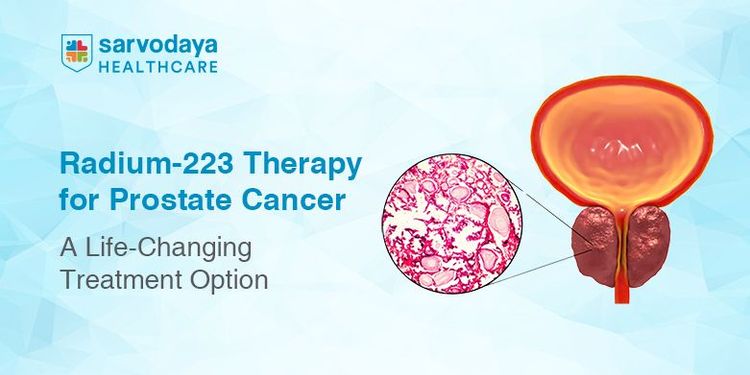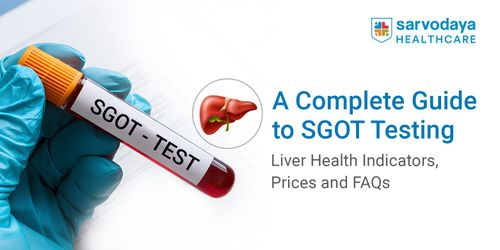Prostate cancer is one of the most common cancers affecting men worldwide, and its impact on health can be devastating. Despite advances in treatment, managing bone pain and improving quality of life remain major challenges. Radium-223 therapy, also known as Xofigo radium-223 therapy, has emerged as a groundbreaking treatment for patients who have prostate cancer that has spread to the bones.
In this blog, we will explore radium-223 therapy for prostate cancer, how it works, who can benefit from it, and the potential advantages of this treatment.
Understanding Prostate Cancer
Prostate cancer is the uncontrolled growth of cells in the prostate, a small gland located below the bladder. When prostate cancer spreads beyond the prostate, it commonly affects bones, especially in the later stages of the disease. This spread is known as bone metastasis, and it can cause severe pain, fractures, and a significantly reduced quality of life.
The typical symptoms of prostate cancer with bone metastases include:
- Severe bone pain, especially in the lower back, hips, or thighs.
- Difficulty walking or standing for long periods.
- Increased risk of fractures due to weakened bones.
- Decreased mobility, leading to loss of independence.
Exploring Radium-223 Therapy
Radium-223 therapy, also known as Xofigo, is a targeted treatment used for patients with prostate cancer that has spread to the bones. Unlike traditional radiation therapies, Xofigo radium-223 therapy works by delivering targeted radiation directly to the bone metastases. The therapy uses a radioactive isotope of radium (Ra-223) that mimics calcium and selectively targets areas of the bone affected by cancer cells.
The therapy focuses on treating the cancer cells in the bones, providing significant pain relief, reducing the risk of fractures, and potentially extending survival in patients with advanced prostate cancer treatment. This approach is particularly effective for patients who are experiencing bone pain or other complications caused by bone metastasis.
Read More- Understanding Prostate Cancer: A Complete Guide to Symptoms, Stages and Treatment in India
Working of Radium-223 Therapy
Radium-223 therapy is delivered intravenously, usually in six doses, administered every four weeks. Once in the bloodstream, the radioactive isotope attaches itself to the bone, specifically to areas where cancer has spread. These sites are typically the bones most affected by metastatic castration-resistant prostate cancer (mCRPC).
Here’s how the therapy works step by step:
- Radium-223 Mimics Calcium: Since bone metastases resemble calcium in structure, radium-223 is naturally attracted to these sites.
- Alpha Radiation Delivery: The alpha particles emitted by radium-223 target the cancer cells in the bones, causing damage to them and reducing pain.
- Minimal Damage to Healthy Tissue: The therapy is designed to minimise damage to surrounding healthy bone tissue, offering a more precise treatment than conventional radiation therapies.
Advantages of Radium-223 Therapy
One of the most compelling reasons to choose radium-223 therapy for prostate cancer is its effectiveness in managing bone pain and improving overall quality of life.
The key advantages of Xofigo radium-223 treatment include:
- Long-Term Pain Relief: One of the most immediate benefits of radium-223 therapy is its ability to reduce bone pain caused by metastatic prostate cancer significantly. Targeting the cancer cells in the bones offers long-lasting pain relief and improves mobility.
- Improved Survival Rates: Studies have shown that radium-223 therapy can extend survival for patients with metastatic castration-resistant prostate cancer (mCRPC). Addressing bone metastases effectively helps slow down the progression of cancer and offers patients more time with their loved ones.
- Reduced Fracture Risk: Since bone metastases weaken the bones, there is an increased risk of fractures. Radium-223 therapy reduces this risk by targeting the cancer cells and strengthening the bones, thereby decreasing the likelihood of fractures.
- Minimised Side Effects: Unlike traditional chemotherapy, radium-223 is known for its fewer side effects. Since it specifically targets cancer cells in the bones, the damage to surrounding healthy tissues is minimised, resulting in less nausea, fatigue, and hair loss.
- Improved Quality of Life: As Xofigo radium-223 therapy reduces pain and improves mobility, patients can enjoy a better quality of life. Everyday activities such as walking, sitting, and bending become easier, allowing patients to regain some of their independence.
Side Effects and Considerations
It is important to note that the side effects of Xofigo radium-223 treatment are generally mild and less severe compared to more traditional therapies like chemotherapy.
Some of the common and potential side effects of radium-223 therapy include:
- Bone Marrow Suppression: A reduction in the number of blood cells, which can lead to anaemia, fatigue, and increased risk of infections. This side effect is usually mild, but regular blood tests are required to monitor the blood cell counts.
- Gastrointestinal Issues: Some patients may experience nausea, diarrhoea, or vomiting. These symptoms are often temporary and can be managed with medication.
- Fatigue: While not as intense as chemotherapy-related fatigue, some patients report feeling tired or weak during the course of treatment.
- Pain Flare: In some cases, patients may experience an initial worsening of bone pain before relief begins. This is temporary and can be managed with pain medications.
- Urinary Tract Infections: Although rare, urinary tract infections may occur due to the treatment.
Conclusion
Radium-223 therapy is a revolutionary treatment option for patients with metastatic castration-resistant prostate cancer (mCRPC), particularly those who have developed bone metastases. Its fewer side effects compared to traditional treatments make it an appealing option for many patients, enabling them to regain mobility and enjoy a better life.
Sarvodaya Hospital, known for being the Best Nuclear Medicine Hospital in Delhi NCR, India, offers cutting-edge treatments like radium-223 therapy as part of its comprehensive cancer care services. With a team of the best oncologists in Delhi NCR and access to advanced medical technologies, Sarvodaya Hospital provides personalised treatment plans to meet the unique needs of each patient. Sarvodaya also offers radium-223 therapy for prostate cancer to protect fragile bones from fracture, minimise pain, improve survival rates and increase the overall quality of life for its patients.
Book an appointment now to know more about Xofigo radium-223 treatment from a dedicated professional and take your first step from prostate cancer to a healthy life.



















